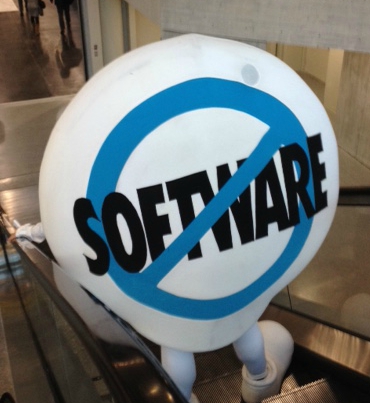Salesforce users: If you buy it, you integrate it

Connecting Salesforce applications and data with other systems across the enterprise is what really adds business value to the project. Yet, confusion and chaos seems to reign across enterprise cloud land when it comes to data and application integration with on-premises systems.

That's the finding of a recent survey of 300 Salesforce users by Jitterbit, an integration vendor. While the vendor obviously has a horse in this race, the results underscore the urgency of application and data integration between Salesforce and on-premises systems. Yet, respondents are divided as to whom should take responsibility for the effort. Forty-four percent said that integration projects were the responsibility of the non-IT users adopting the solution. Another 43 percent said the IT department is expected to own the responsibility for integrating these solutions.
The result: integration chaos from the cloud. Integrating information from other business applications with Salesforce is crucial to gaining a 360-degree view of the customer, yet users often don't have a clear integration strategy in place.
There's no argument that integration is essential to making it all work. Just about all respondents, 90 percent, agree that connecting and consolidating information from other apps and data sources is the challenge. At the same time, 57 percent of these Salesforce users have no integration strategy or are unaware if they have one.
Of those organizations that said they do have an integration strategy, 41 percent said that strategy was to exclusively code their integrations, the survey reported.
Again, it all boils down to the fact that many cloud services are scattershot across the enterprise. More than 70 percent said new software and technology purchases are made or influenced by the department using the solution -- be it marketing, sales, or accounting,
There's still a lot of growth taking place on top of Salesforce implementations as well. Almost two thirds of companies that responded are running three or more applications. Every company surveyed also say they plan to add new applications in the next 12 months, with almost a third planning to add three or more new digital endpoints.
While running Salesforce Sales, Service and Marketing apps in the cloud, a majority of organizations surveyed continue to invest in on-premises databases and hybrid IT infrastructures, the Jitterbit report also observes. All of the organizations surveyed run some type of back-office system for accounting, and more than half have on-premise ERP deployed behind their firewall.
The survey's authors summarize by stating that at issue is the fact that "traditional integration approaches, including legacy enterprise service buses (ESBs), point solutions and custom code, used long before the emergence of cloud, mobile, social and big data architectures," are still in use. "These approaches are complex, expensive and rely heavily on developers with deep technical understanding. Bottlenecks are created. Sales slow. Nobody is happy."
Of course, the question ultimately becomes: when does the entire mess get dropped in IT's lap to resolve and clean up?